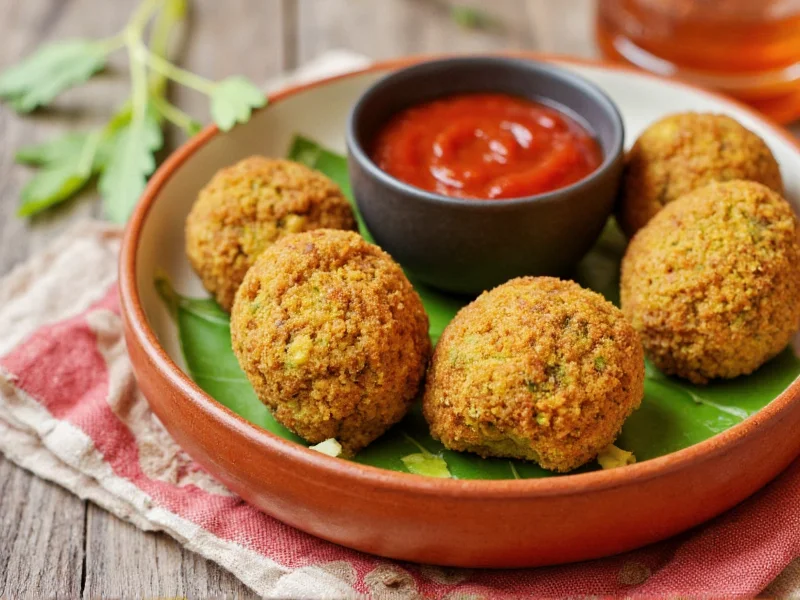Falafel, one of the Middle East's most beloved street foods, has sparked countless debates about its "authentic" ingredients. When examining fennel in falafel recipes, culinary historians and food experts agree on a crucial distinction: traditional falafel from Egypt and the Levant doesn't include fennel as a core component.
The Traditional Falafel Flavor Profile
Authentic falafel relies on a carefully balanced spice combination where cumin plays the dominant role. The classic Egyptian version made with fava beans (ta'meyya) and the Levantine chickpea-based version both emphasize:
- Cumin (the essential earthy backbone)
- Coriander (for citrusy notes)
- Parsley and cilantro (fresh herbal elements)
- Garlic (for pungency)
- Onion (for sweetness and texture)
Fennel seeds, with their distinct licorice-like flavor, fall outside this traditional flavor profile. Their inclusion represents a modern interpretation rather than historical practice.
Where Fennel Appears in Falafel Variations
While not traditional, fennel has found its way into some contemporary falafel recipes:
| Regional Variation | Fennel Usage | Reason for Inclusion |
|---|---|---|
| Middle Eastern diaspora communities | Occasional addition (¼-½ tsp) | Personal preference or fusion cooking |
| Western restaurant interpretations | Sometimes featured | Creating "signature" versions |
| Vegetarian/Vegan cookbooks | Occasional experimentation | Adding complexity to plant-based dishes |
Flavor Impact of Fennel in Falafel
When cooks add fennel to falafel mixtures, they introduce several flavor dimensions:
- Sweet licorice notes that contrast with the earthiness of cumin
- Subtle anise undertones that can complement the herbal elements
- Additional aromatic complexity when toasted before grinding
- Potential flavor conflict with traditional profiles if overused
Chefs experimenting with fennel seeds in chickpea falafel typically use no more than ½ teaspoon per batch. Exceeding this amount risks overwhelming the delicate balance that defines well-made falafel.
Authenticity vs. Innovation Debate
The question of whether to include fennel touches on broader discussions about culinary authenticity:
"Traditional Egyptian ta'meyya has never contained fennel. The spice profile developed over centuries specifically to complement fava beans without competing flavors." — Chef Maha Correa, Cairo Culinary Institute
Meanwhile, chefs in global kitchens argue that food evolves. Some Israeli and American chefs incorporate fennel as part of regional adaptations, creating what might be called "New World falafel." Understanding this distinction helps home cooks decide whether they're aiming for historical accuracy or personal expression.
Practical Guidance for Home Cooks
If you're experimenting with adding fennel to homemade falafel, consider these professional tips:
- Toast first: Lightly toast fennel seeds before grinding to enhance their aroma
- Start small: Begin with ¼ teaspoon per 2 cups of chickpeas
- Balance carefully: Reduce cumin slightly to maintain flavor equilibrium
- Test fry: Cook one test falafel before committing to the entire batch
- Consider accompaniments: Fennel-enhanced falafel pairs well with citrusy tahini
Remember that traditional falafel already contains multiple herbs and spices. Adding fennel creates a different culinary experience rather than improving authenticity.
Common Misconceptions About Fennel in Falafel
Several myths persist about fennel's role in falafel preparation:
- Myth: Fennel helps falafel hold together better
Reality: Proper chickpea soaking and binding agents like chickpea flour affect texture more than fennel - Myth: All Middle Eastern cuisines use fennel in falafel
Reality: Egyptian, Lebanese, and Palestinian traditions typically exclude it - Myth: Fennel is necessary for authentic flavor
Reality: Traditional recipes achieve complexity through cumin, coriander, and fresh herbs alone
Traditional Alternatives to Fennel
If you're seeking complexity without straying from authentic preparations, consider these traditional spice adjustments:
- Increase fresh parsley and cilantro for brighter herbal notes
- Add a pinch of cayenne for subtle heat
- Include a small amount of dried mint for freshness
- Use freshly ground black pepper for complexity
- Incorporate a touch of ground coriander for citrus notes
These adjustments stay within the historical flavor parameters while adding dimension to your traditional chickpea falafel recipe.
Conclusion: Respecting Tradition While Exploring Flavor
While fennel isn't part of authentic falafel heritage, its occasional use in modern interpretations reflects food's natural evolution. Understanding the traditional spice profile helps cooks make informed decisions about when to honor culinary history and when to explore new flavor combinations. Whether you choose to include fennel or stick to classic preparations, the key to perfect falafel remains proper technique, fresh ingredients, and respect for the dish's rich cultural background.











 浙公网安备
33010002000092号
浙公网安备
33010002000092号 浙B2-20120091-4
浙B2-20120091-4